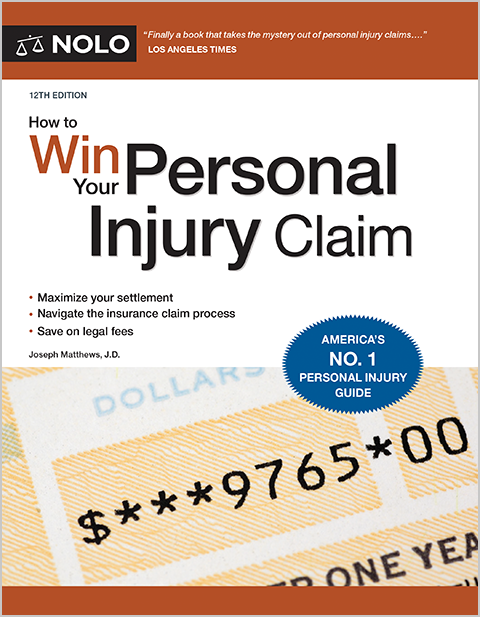Learn when California dog owners are legally responsible for bites and other injuries, the state’s rules for dangerous dogs, and more.
If you're a dog owner in California, or you've been hurt by someone else's dog, it's important to understand how the Golden State's dog-bite liability rules apply to you.
In this article, we'll discuss what you need to know about personal injury lawsuits over harm caused by dogs—including how the state's "strict liability" dog-bite statute works, how much time a victim has to file their case, and defenses a dog owner might raise when faced with a personal injury claim over a dog-bite incident.
We'll also talk about other potential consequences—for the animal and for its owner—when a dog bites, attacks, or engages in other dangerous behavior.
- What Is California's "Strict Liability" Dog-Bite Law?
- When Can California Dog Owners Be Liable for Negligence?
- What's the Deadline for Filing a California Dog-Bite Lawsuit?
- What Are a Dog Owner or Handler's Defenses to Bite Liability in California?
- What Happens to Dogs That Bite People in California?
- What Happens to Vicious and Dangerous Dogs in California?
- When Can Dog Owners Face Criminal Charges in California?
- What Should You Do Next in Your Dog-Bite Case?
What Is California's "Strict Liability" Dog-Bite Law?
California is a "strict liability" state when it comes to dog bites. This means that owners can't escape liability for a dog bite by claiming they had no idea their dog would act aggressively. The owner is responsible for all damages resulting from a dog bite, even if the dog has never bitten anyone before.
The state's dog-bite statute makes this explicit—it says that an owner is liable for a bite "regardless of the former viciousness of the dog or the owner's knowledge of such viciousness."
Therefore, a dog owner is strictly liable if:
- their dog bites someone, and
- the bite victim was either in public, or "lawfully in a private place."
Examples of people who would be "lawfully in a private place" include:
- invited guests
- a postal employee delivering the mail, and
- people a homeowner has hired to do yardwork or clean the house.
Keep in mind that, even in a strict liability case, an owner can offer defenses that could limit or eliminate their liability. We'll talk more about these defenses below.
(Cal. Civ. Code § 3342 (2025).)
When Can California Dog Owners Be Liable for Negligence?
California's dog-bite statute only applies to bite injuries. It does not cover other kinds of injuries caused by dogs. For instance, suppose a child is playing on the sidewalk when a dog jumps on the child, accidentally scratching the child's eye and causing injury. The dog-bite statute does not apply, because the injury was not caused by a bite.
Keep in mind that:
- a "bite" doesn't necessarily mean that the animal's teeth broke the victim's skin, and
- when a dog bites someone the owner can be held responsible for all of the resulting injuries.
For example, in one case a worker fell off a ladder after a dog closed its jaws on his pants. The court held that this counted as a bite, and that the animal's owner was therefore liable for the worker's injuries. (Johnson v. McMahan, 80 Cal.Rptr.2d 173 (Cal. App. 2d Dist. 1998).)
However, in non-bite cases owners could still be liable under California's negligence rules. In a negligence lawsuit, the argument would be that the dog owner failed to take reasonable steps to secure the dog, and that this carelessness led directly to the victim's injuries. So, negligent dog owners cannot avoid liability just by pointing out that the victim didn't suffer a bite.
What's the Deadline for Filing a California Dog-Bite Lawsuit?
A statute of limitations is a law that places a deadline on your right to file a lawsuit in your state's civil court system.
Dog-injury cases (including both bites and other kinds of harm) are subject to a two-year statute of limitations. That means you must file a personal injury complaint within two years of the bite, or the court will almost certainly dismiss your case.
(Cal. Civ. Proc. Code § 335.1 (2025).)
What Are a Dog Owner or Handler's Defenses to Bite Liability in California?
A California dog owner may raise the defense of "trespassing" against a dog-bite claim. Remember, California's dog-bite statute requires an injured person to be either in a public place or lawfully in a private place in order to collect damages under the statute. An injured person who was trespassing on private property when the bite occurred wouldn't be considered "lawfully in a private place," so they won't be successful in an injury claim brought under the California dog-bite statute. (Cal. Civ. Code § 3342 (2025).)
An owner can also raise the defense that the injured person provoked the dog, or was responsible for their own injuries in some other way. The argument that the defendant was wholly or partially responsible for their own injuries is a common defense in all kinds of negligence cases.
Under California's "pure" comparative negligence rule, a defendant can reduce their liability (and the money they owe a plaintiff) in proportion to the defendant's own responsibility for an accident. (Li v. Yellow Cab Co., 13 Cal.3d 804 (Cal. 1975).)
Remember that an owner can argue that their dog was provoked even if the plaintiff sues under California's strict liability dog-bite law. This isn't necessarily obvious from the text of California's strict liability statute, which could be interpreted to mean that an owner is liable for any bite (unless the victim is a trespasser). But California's courts have ruled that it would be unfair to interpret the law like that, since it would hold a dog and its owner responsible even in situations where the dog was just reacting to being abused, teased, or provoked. (Gomes v. Byrne, 51 Cal. 2d 418 (1959).)
Similarly, even under California's strict liability rules, an owner can sometimes raise the defense that the person who was bitten assumed the risk that they might be injured. The so-called "veterinarian's rule" allows owners to argue that vets, kennel workers, and others who choose to work with animals accept at least some risk of being hurt by those animals. Whether this defense is allowed, or is likely to be successful, will depend on the facts of each case. (Priebe v. Nelson, 39 Cal.4th 1112 (Cal. Sup. Ct. 2006).)
Finally, California law explicitly bars lawsuits against government agencies and the military in situations where the dog:
- was provoked, or
- was carrying out its law enforcement or military duties.
Keep in mind that these defenses only apply if the agency responsible for the dog has a written policy for handling its working dogs. Also, just because a dog is on the job doesn't mean there can never be liability for a bite. The bite has to be somehow related to the dog's work. So, for example, a fleeing suspect couldn't sue the police department over being bitten by a police dog. But if the police dog veers off and bites an innocent bystander, that person might have a case. (Cal. Civ. Code § 3342 (2025).)
What Happens to Dogs That Bite People in California?
If a dog bites a person, California law requires the owner to take "reasonable steps" to make sure the dog doesn't continue to pose a biting risk (for example, giving the dog additional training or making sure it's kept in a secure enclosure).
If a dog has bitten a person in two (or more) separate incidents, the consequences for the dog could be more severe. In that situation, government attorneys or private citizens could bring an action against the owner. There would then be a court hearing to decide if the owner has done enough to make sure the dog no longer poses a danger to people. The court has a lot of leeway to decide how to deal with the situation—and that could include removing the dog from the area or ordering that it be "destroyed" (that is, euthanized).
Keep in mind, though, that you can't bring this kind of action against a dog owner just because the dog has bitten trespassers.
A private citizen or government attorney can sometimes bring an action against a dog owner after a single biting incident. That's only allowed if:
- the bite results in "substantial injury," and
- the dog has been trained to fight other dogs, or trained to attack people.
The court has the same leeway in these kinds of cases to have the dog euthanized or removed from the area.
(Cal. Civil Code § 3342.5 (2025).)
What Happens to Vicious and Dangerous Dogs in California?
California also has a separate legal procedure for controlling potentially dangerous and vicious dogs. This process is similar to the one for dogs that have bitten someone, but there are a couple of important differences:
- Private citizens can't ask for a hearing. The dog-bite hearing process can be started with a complaint from a member of the public. A hearing for a potentially vicious or dangerous dog can only be requested by a law enforcement or animal control officer. (A member of the public can still file a complaint that can be used by an officer to explain why a hearing is necessary.)
- No bite is required. A hearing can be held if a law enforcement or animal control officer investigates and thinks there's probable cause that a dog is potentially dangerous or vicious—even if the dog hasn't bitten anyone.
(Cal. Food & Agric. Code § 31621 (2025).)
How California Defines "Dangerous" and "Vicious" Dogs
California law defines when a dog is "potentially dangerous" or "vicious." These definitions are used:
- by officers to decide if they need to request a hearing for a dog, and
- by courts to decide what should happen to a dog and what requirements should be imposed on its owner.
State law addresses dogs' behavior, not their breed. Local governments in California are barred from singling out particular breeds when creating legislation for vicious and dangerous dogs.
(Cal. Food & Agr. Code § 31683 (2025).)
A dog is "potentially dangerous" if it has done any of the following without being provoked:
- Bitten someone and caused an injury that isn't severe.
- Forced people to defend themselves from aggressive behavior in at least two separate incidents in the previous three years. (This only applies if the incidents took place off of the dog owner's property.)
- Killed or injured a domestic animal in at least two separate incidents in the previous three years. These incidents must have occurred off of the dog owner's property. (This only applies if the incidents took place off of the dog owner's property.)
If an animal has been declared potentially dangerous, its owner is required to take steps including:
- making sure the dog is vaccinated and licensed
- either keeping the dog indoors, or in an escape-proof enclosure that children can't get into
- only allowing the dog off the property if it's on a secure leash controlled by a responsible adult.
(Cal. Food & Agric. Code § 31602 (2025); Cal. Food & Agric. Code § 31642 (2025).)
A dog is "vicious" in three situations:
- it has aggressively injured or killed someone without being provoked, or
- a court has declared the dog potentially dangerous, and the animal repeats that dangerous behavior
- a court has declared the dog potentially dangerous, and its owner disobeys court orders about how to protect the public from their pet.
(Cal. Food & Agric. Code § 31603 (2025).)
Animal control may destroy (euthanize, in other words) a vicious dog if it poses a significant threat to the public. The owner may also be prohibited from having any dog for up to three years.
If a vicious dog is not destroyed, then its owner must comply with conditions designed to control the animal and protect the public. Owners or keepers of dangerous or vicious dogs will be fined for any violations of these restrictions.
(Cal. Food & Agric. Code § 31645 (2025); Cal. Food & Agric. Code § 31646 (2025).)
The Process for Deciding That a Dog is Dangerous or Vicious
Before a dog can be declared potentially dangerous or vicious, the government has to hold a hearing where it considers the evidence and gives the owner a chance to argue on behalf of their pet. If the owner isn't happy with the decision at the hearing, they can appeal, but the outcome of that appeal is final.
(Cal. Food & Agric. Code §§ 31621-31624 (2025).)
A hearing can be ordered if an animal control or law enforcement officer has probable cause (that is, a good reason) to believe that the dog is dangerous or vicious. If there's probable cause to believe that a dog poses an immediate threat to public safety, it can be impounded even without a hearing. But there would still need to be a hearing before the government could permanently take the dog from its owner or impose other consequences.
(Cal. Food & Agric. Code § 31621 and 31625 (2025).)
When a Bite or Attack Can Be Excused
California law recognizes that there are certain situations where a dog's aggressive behavior is acceptable, or at least excusable. A dog can't be declared vicious or dangerous if it injures someone who was:
- trespassing or committing another tort on the premises of its owner or keeper
- teasing, tormenting, abusing, or assaulting the dog; or
- committing or attempting to commit a crime.
Dogs are also permitted to protect or defend people from unjustified attacks and assaults without being declared vicious or dangerous.
If a dog injures another animal, that can't be used to declare the dog vicious or dangerous if:
- the other animal was teasing, tormenting, abusing, or assaulting the dog, or
- the dog was on its owner's property or under its owner's control, and injured the other animal as part of its work as a hunting, herding, or predator control dog.
(Cal. Food & Agric. Code § 31603 (2025).)
When Can Dog Owners Face Criminal Charges in California?
There are several situations in which California dog owners can face criminal charges.
An owner can be convicted of a misdemeanor and fined $100 if their dog bites someone and they don't provide the victim (or the victim's parent or guardian) with their contact information, along with their dog's license and vaccination information. (Cal. Pen. Code § 398 (2025).)
Owners also risk criminal liability if they fail to control a dog that they know could be "mischievous" (that is, dangerous). If an owner knows their dog might be dangerous, they're legally obligated to make sure the dog doesn't roam around off leash, and to take other reasonable precautions to protect people. Owners who fail to do this could be charged with:
- either a misdemeanor or a felony if the dog injures someone, or
- a felony if the dog kills someone.
(Cal. Pen. Code § 399 (2025).)
The owner of a dog that's been trained to fight, attack, or kill can also face serious criminal charges if they know the dog is dangerous and they don't take ordinary care to protect others. In that situation, the owner could be charged with a felony if the dog either:
- bites people on two separate occasions, or
- has one biting incident that results in serious injury.
An owner who's found guilty under this statute could face up to four years in jail and a $10,000 fine. (Cal. Pen. Code § 399.5 (2025).)
What Should You Do Next in Your Dog-Bite Case?
If you find yourself on either side of a dog-bite claim, or have other questions about how California law applies to dogs and their owners, it may be time to discuss your situation with a personal injury lawyer.
If you've been injured by a dog, an attorney can walk you through how a personal injury lawsuit works in California. An experienced attorney will also be able to help you decide if suing makes sense given the strength of your case and the amount of your damages. As we've seen, the laws covering dogs and their owners can be complicated. So, whatever the specifics of your situation, if you decide to consult an attorney make sure they have the right experience to advise you on what to do next.
- What Is California’s "Strict Liability" Dog-Bite Law?
- When Can California Dog Owners Be Liable for Negligence?
- What’s the Deadline for Filing a California Dog-Bite Lawsuit?
- What Are a Dog Owner or Handler’s Defenses to Bite Liability in California?
- What Happens to Dogs That Bite People in California?
- What Happens to Vicious and Dangerous Dogs in California?
- When Can Dog Owners Face Criminal Charges in California?
- What Should You Do Next in Your Dog-Bite Case?


